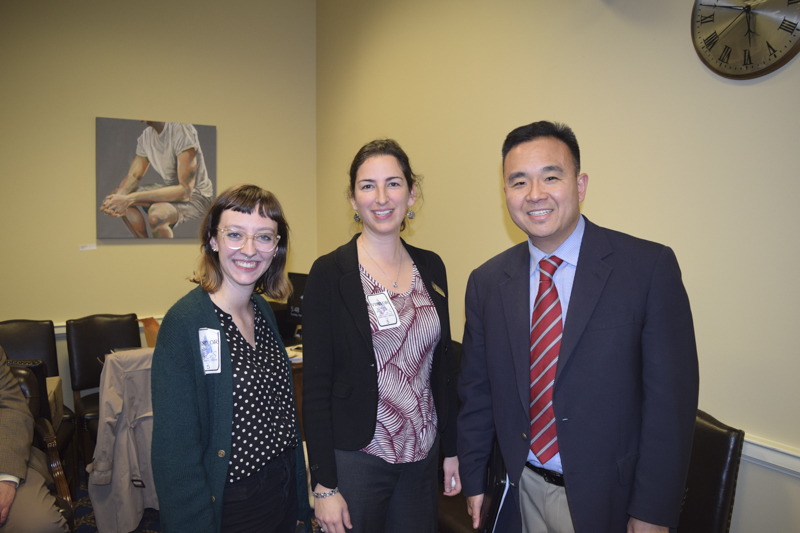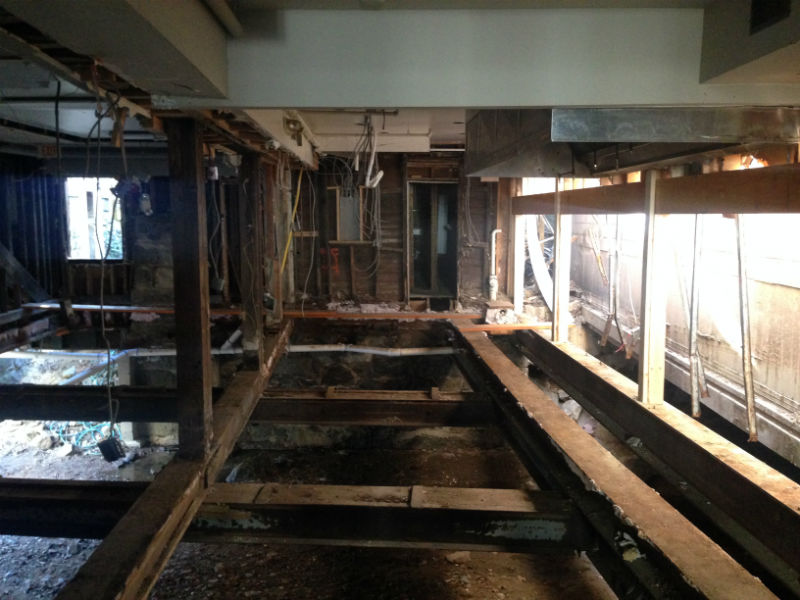Immediately after the flooding in Ellicott City, Preservation Maryland initiated a statewide fundraising effort and was one of the first non-profit organizations to provide boots-on-the-ground by opening the Ellicott City Preservation Resource Center. That Center has been open and staffed since August, here’s what we’ve contributed to the recovery:
FROM THE FIELD DIRECTOR, RENéE NOVAK
For the past seven months, Renée Novak and Michelle Eshelman of Preservation Maryland have been on the ground assisting with recovery and rebuilding efforts as a result of the flash flood on July 30, 2016 that devastated the historic Main Street in Ellicott City in just a few short hours.
With the goal of responding specifically to the needs of historic property owners, Preservation Maryland secured a small office space in the existing Howard County Office of Tourism. The Main Street location was critical to raise awareness of the Resource Center to property owners and the larger community. With the opening of the new Millworks Business Resource Center by the Howard County Economic Development Authority, also on Main Street, the Preservation Maryland team splits their time between both locations and walk down Main Street everyday.
EMERGENCY MEASURES
Just days after the flood, Preservation Maryland brought together the needed preservation expertise and second opinions needed to prevent the initial call to demolish the severely damaged buildings at 8109-8113 Main Street. Located at the bend of Main Street, the storefront that housed Joan Eve Classics and Collectibles antique store was ripped apart by debris surging through the flood waters. Keast & Hood and Structural Engineers Group responded to a request by Preservation Maryland to evaluate the property and developed and implement a temporary support system. Because of these emergency measures, the owners were able to start the long process of rebuilding, and – no historic buildings have been lost due to the flooding.
Like the buildings of Joan Eve, the structures situated directly above the Tiber River on the south side of Main Street incurred the most physical damage. These buildings encountered rising water levels of nearly one story high, completely inundating the first floors from underneath while breaking through storefronts and washing away the existing historic floors in a matter of minutes. The result left many businesses with completely exposed floor openings over the river bed, except for the historic metal and wood trusses that survived as part of the original framing system.
PORTALLI’S NEW FLOOR
- New compressed foam floor over the Tiber River.
- The Tiber River flows directly below Portalli’s Restaurant.
Property owners had to quickly come up with new techniques and creative solutions for constructing flooring systems over the water portion that would meet code requirements and stand up to hydrostatic pressure. Varying from property to property, some of these resilient flooring systems consist of 14-inch thick, poured-in-place concrete reinforced with steel beams and integrated with a metal framing system. At Portalli’s, directly above the Tiber River, the floor was replaced with compressed foam. In other instances, the original flooring was salvaged.
WORKING IN SYNC
One can imagine the complexity that comes with suddenly entering into a small town that has just suffered a catastrophic event. Rebuilding a community involves many layers and there are many moving parts, so it is critical to engage in partnerships with governmental agencies and local organizations, as well as invite and encourage daily interactions with individual businesses, residents, and property owners.
Each building and property situation was slightly different, and required custom attention. Many business and property owners did not have flood insurance or were not able to receive any kind of financial assistance. Our initial months on Main Street were spent triaging and assisting with whatever preservation needs arose such as mold remediation in a historic building or helping design a compatible new storefront. Working closely with the Howard County Department of Planning and Zoning, we helped business owners navigate the often intimidating process of historic design review and applications for financial incentives to rebuild historic properties. Preservation Maryland worked to connect qualified contractors and consultants with those in need of these services and to help with rebuilding solutions for a more resilient Main Street.
EDUCATION AND OUTREACH

Delegate Chang with our Ellicott City Team, Michelle and Renee.
Preservation Maryland’s role continued with participating in local planning workshops on flood recovery, as well as attending Historic District Commission meetings and workgroups on a regular basis. In December 2016, Preservation Maryland joined with Patapsco Heritage Greenway to lead a walking tour that focused on the impact the rising flood waters had on various historic buildings along Main Street. In 2017, we participated in a recovery panel discussion led by the Urban Land Institute – Baltimore and hosted by the Howard County Economic Development Authority to explore design options for rebuilding Main Street, and that presentation is available online as a resource.
THE WORK CONTINUES
Main Street in Ellicott City officially reopened on October 6, 2016 with a ceremony by County Executive Kittleman as a milestone in recovery even as building-by-building work still continues and businesses continue to reopen. Preservation Maryland and it’s partners have helped the property owners rebuild with resiliency all while preserving the architectural characteristics of historic Ellicott City.
This spring, Preservation Maryland will work with the One EC Recovery Project as well as Historic Ellicott City, Inc. to support important new initiatives and programs aimed at investing resources in the historic downtown.


